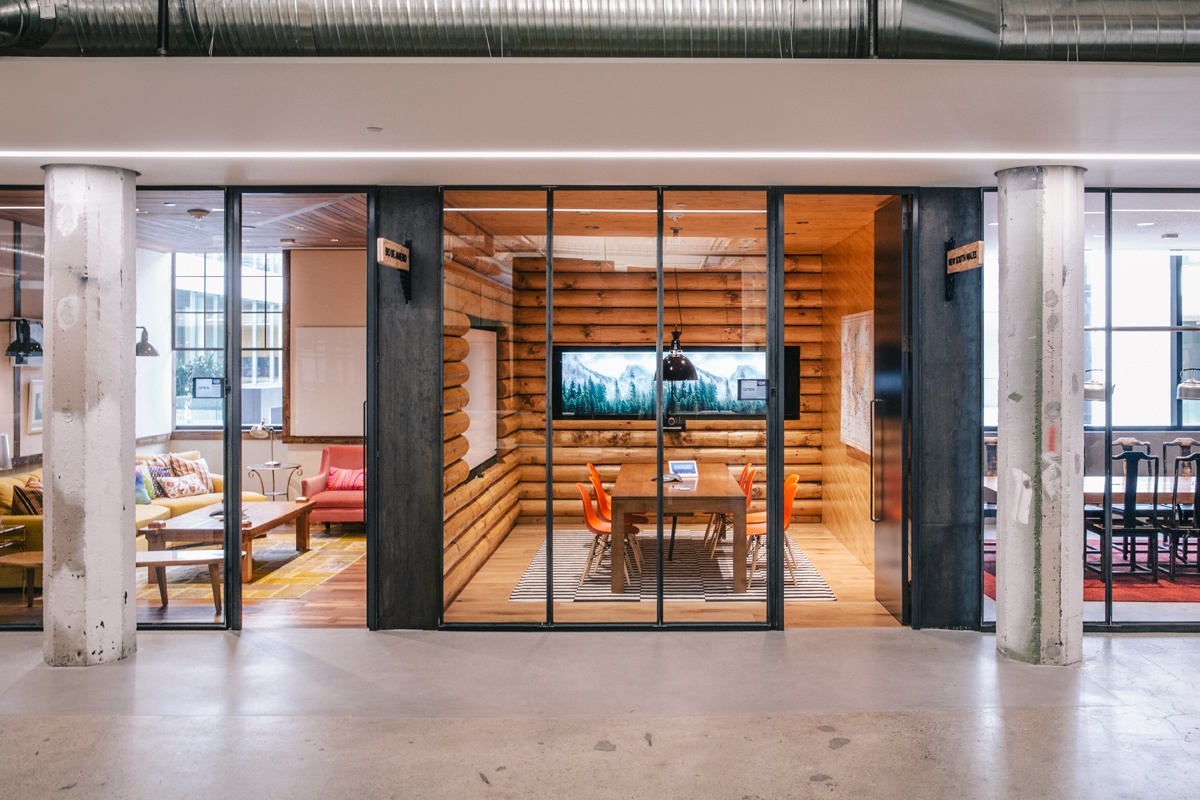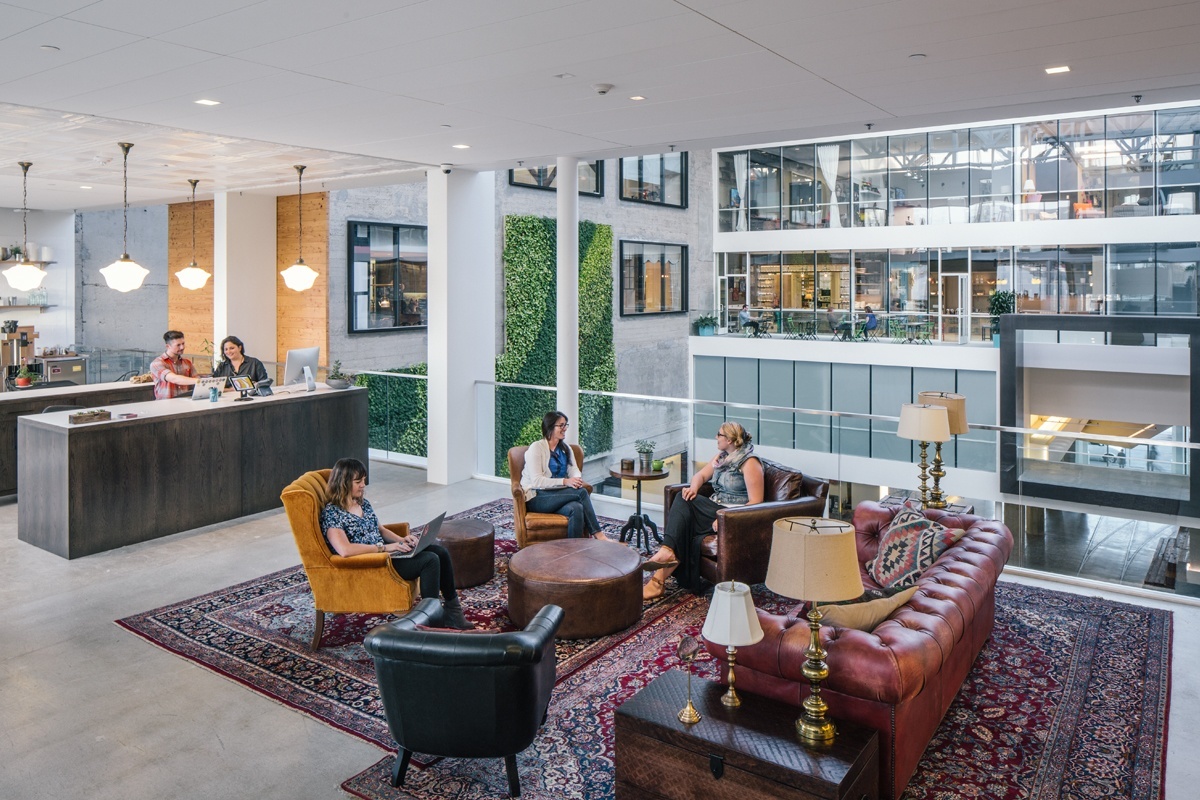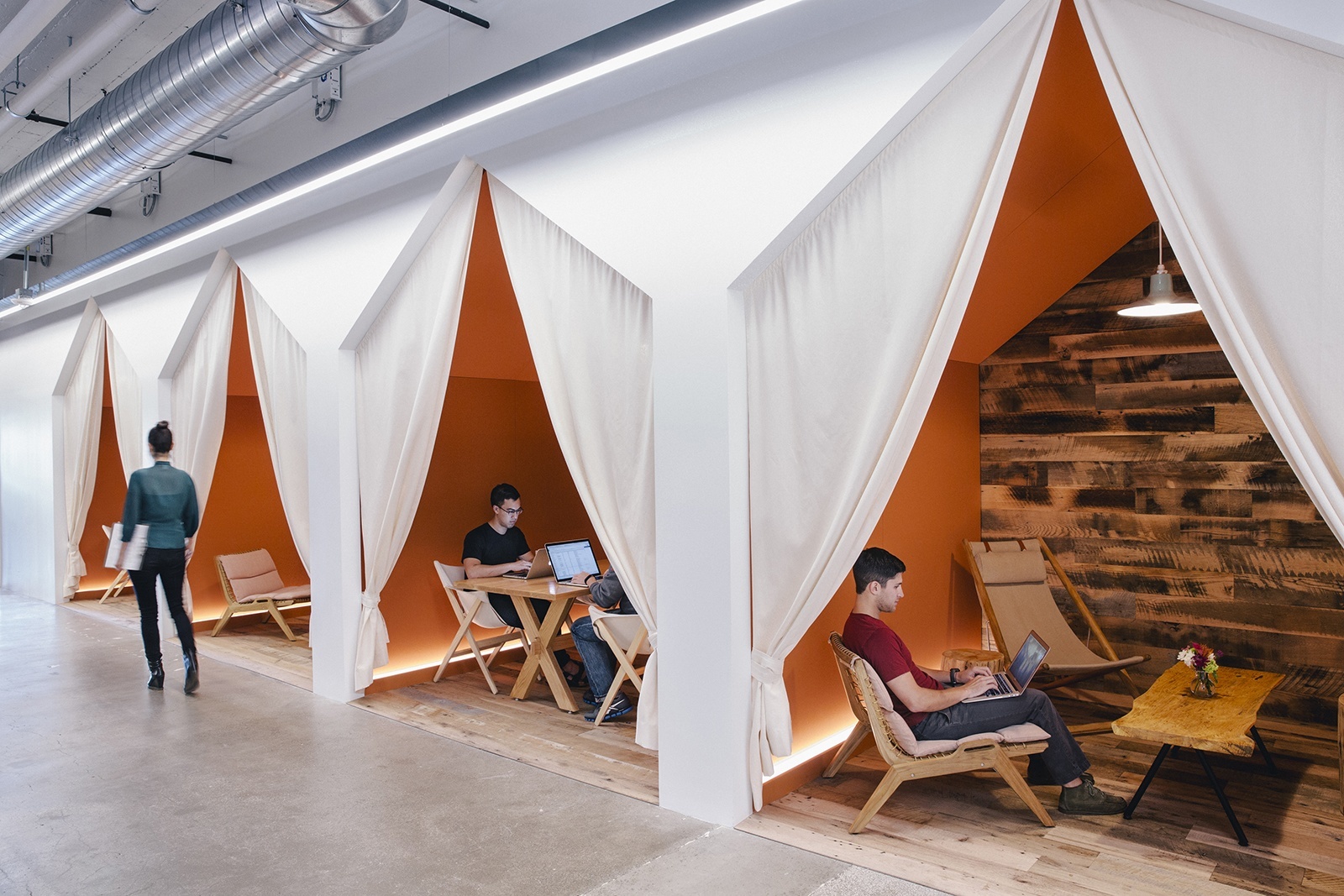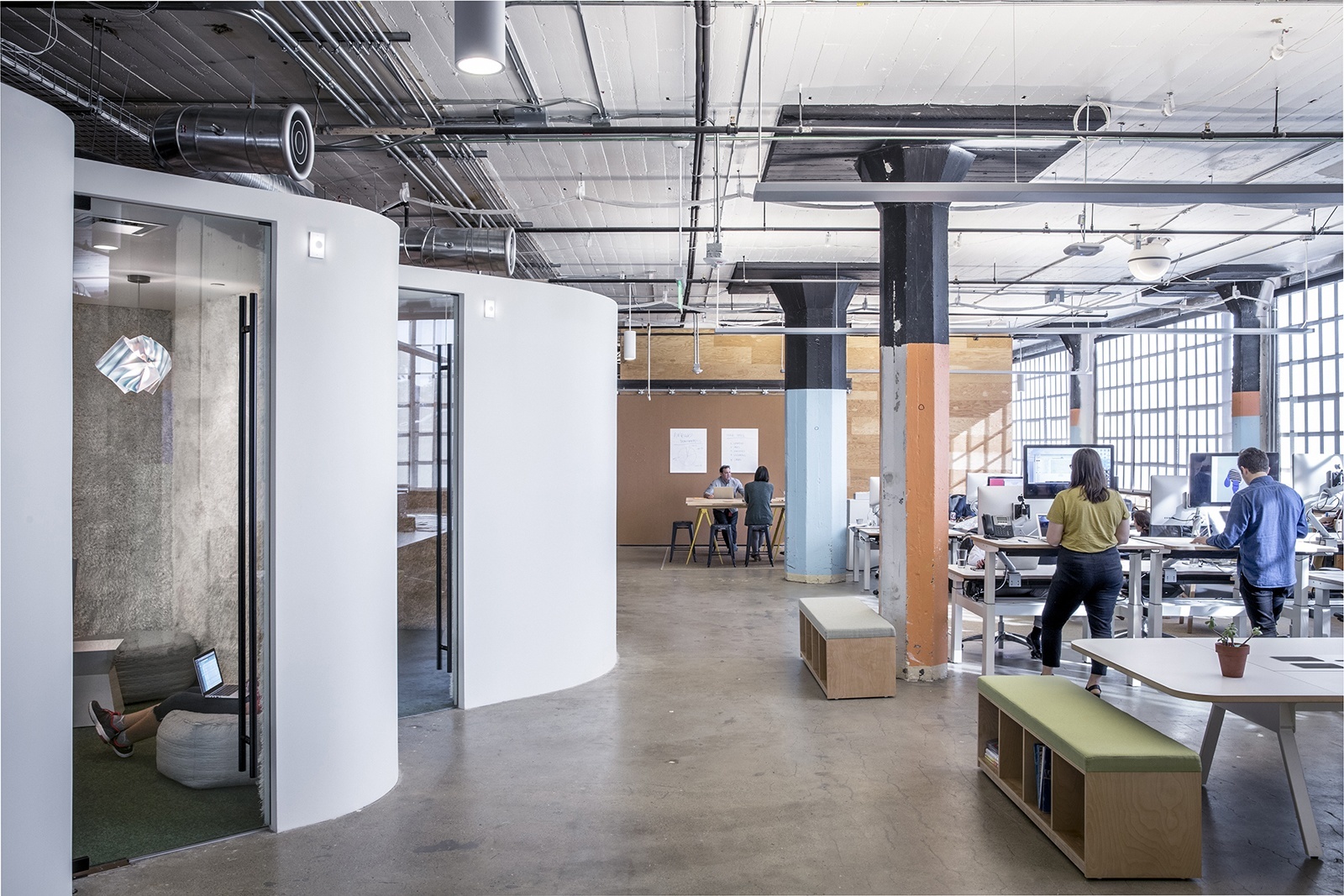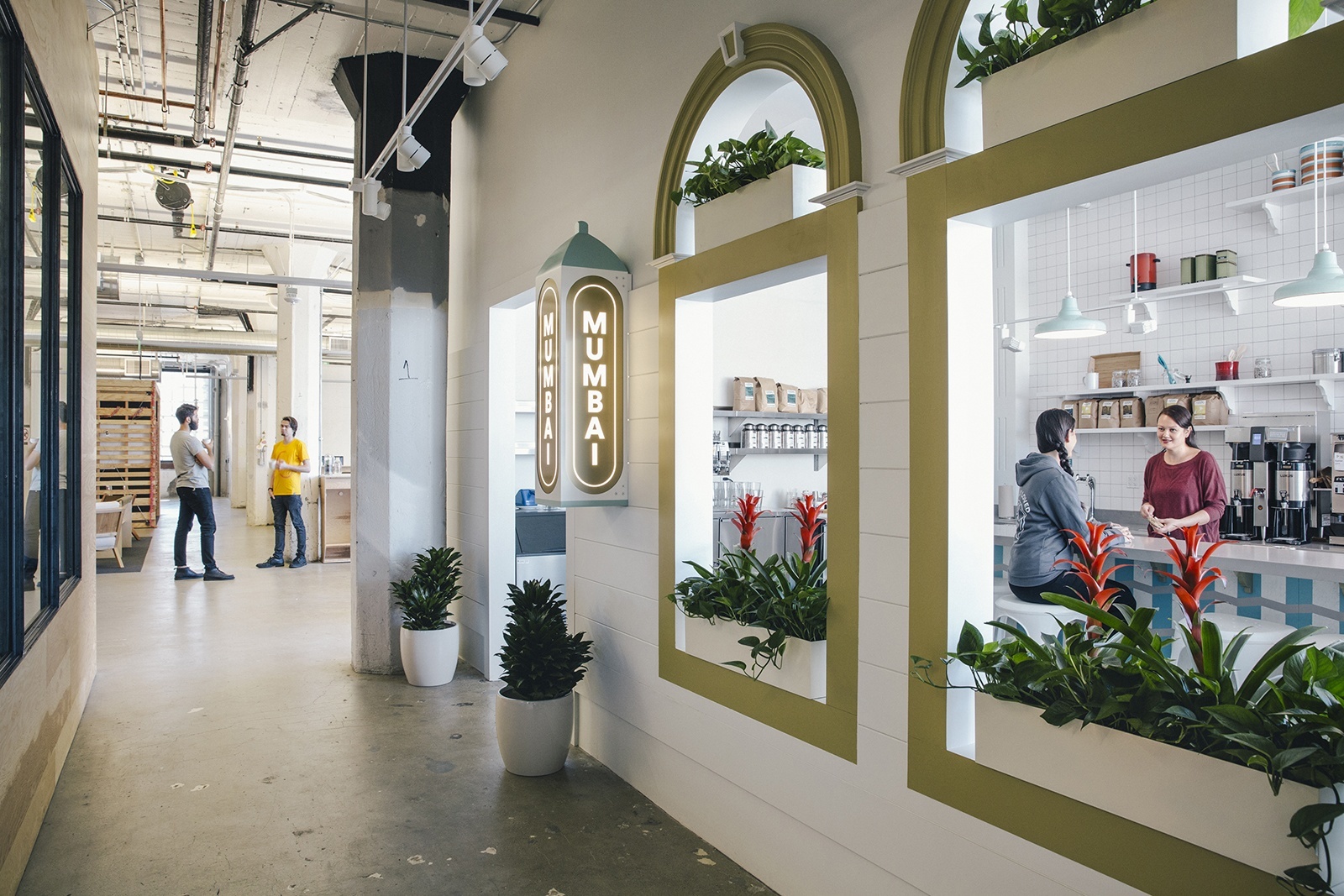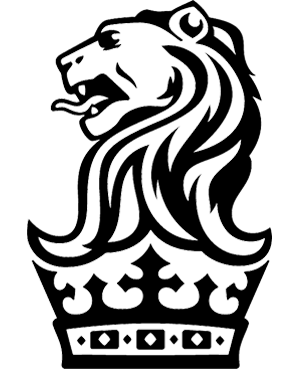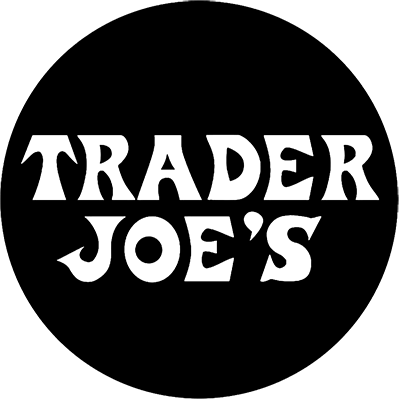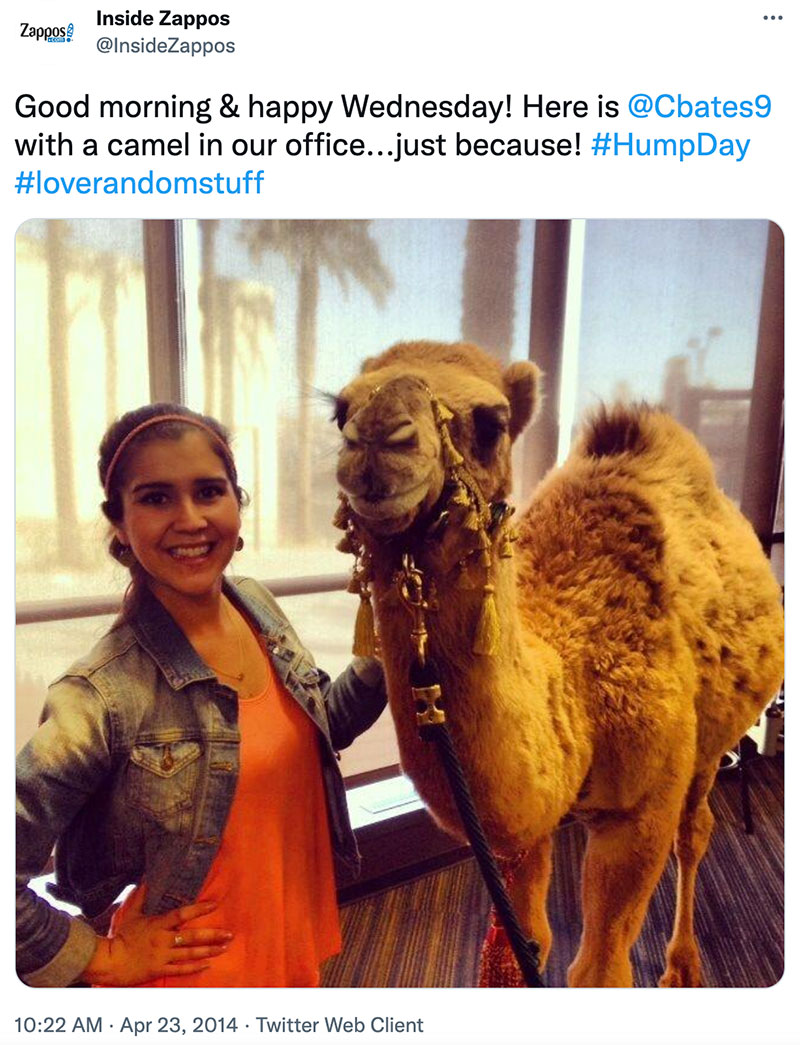Culture
Atmosphere
What type of work environment do you want to create? See how brands shape the way employees interact with each other and their surroundings.
Make time to talk about elephants, dead fish, and vomit
When Airbnb co-founder Joe Gebbia received his anonymous 360-degree review results, he learned that his peers perceived him as a perfectionist who was defensive and too hard-working. People were afraid to be candid with him, causing problems to fester. Additionally, staff felt forced to work his late hours, causing burnout and a desire to leave the company.
To create a space where people could be honest and open about these issues sooner, Joe addressed all of this feedback at a company-wide meeting and introduced a new philosophy called elephants, dead fish, and vomit.
- Elephants are the big truths that no one dares to bring up or discuss.
- Dead fish are personal grievances or things in the past that people can't seem to forget or let go of.
- Vomit sessions allow people to speak freely about issues without interruption and risk of judgment.
Now, during every company-wide meeting, Joe addresses these topics; division managers dedicate time solely to talking about them; and Gebbia receives emails from staff with all-caps subject lines: JOE: THE BAD NEWS YOU NEED TO HEAR.
Immerse your people in an environment that embodies your product
If staff are generally in the office more than at home, it was essential to Airbnb's leaders that their office space not only felt like home but also connected staff deeply to their work. Inspired by the unique listings on their website, co-founder Brian Chesky set out to recreate their office as Airbnb listings down to the smallest detail. They started by contacting hosts, asking if it was okay to recreate their homes, and then asking for an inventory of all their furniture and fixtures.
Soon, workspaces mirrored global hosting locations, from camping tents to Mumbai cafes. The cost was less than expected as most home furniture is cheaper than office furniture. The designs also became a huge competitive advantage for hiring, even inspiring tens of thousands of people each year to take a tour.
Reinforce your values at every touchpoint
When Airbnb staff use their keycard to check in at work, above it reads their value, Champion the Mission. This is just one of the subtle ways that co-founder Brian Chesky integrates Airbnb's values into as many touchpoints as possible around the company. He explains that "Culture is about repetition. It's about repeating over and over again the things that really matter at the company."
Be an ultimate user of your own products
Airbnb CEO Brian Chesky has always been an avid guest of Airbnb rentals, and in 2022, he began spending over half of each year living in them. His goal of becoming the ultimate guest was driven by the belief that all staff must become experts in every part of the product, and experience it from the user's perspective.
This long-standing belief in being a user of your products has also led Airbnb to provide a $2,000 credit to each employee every year to stay at Airbnb rentals. This stipend is paid quarterly, encouraging staff to understand the guest experience and incentivizing them to maximize their paid vacation time.
Sweat the details
At Apple, caring about the details is the only way to truly show that you care about the user's experience. Every person at Apple, starting with leadership, is expected to scrutinize over every detail of their division down to the pixel, spreadsheet cell, or line of code.
- Jobs once returned all of the phones at Apple headquarters because they weren't the right shade of ivory.
- Jobs spent months adjusting the colors, effects, and styling of just the red, yellow, and green buttons, in the Mac OS.
- Jobs also spent 450 hours preparing, adjusting, reworking, and practicing for the 22-minute presentation that introduced the Lion operating system.
- Designers scrutinized over finding the perfect type of rounded corner that would influence all Apple designs. They chose the squircle, a shape that every leader is expected to be able to identify on sight.
- Packaging designers opened and closed boxes for months, going through hundreds of iPod box prototypes.
- Designers tested an endless series of arrows, colors, and tapes when designing the sticker that adhered to the top of the iPod box.
- Leaders would inspect every pixel of every icon with a jewelry loupe.
- Leaders would read and rework every disclosure, terms of conditions, and agreement to make sure it had the right tone.
- Designers reworked the Apple pencil so that whenever it rolled it would stop with the logo facing up.
Look for inspiration everywhere
To Steve Jobs, creativity was about connecting two unrelated things and bringing them together. As he has said, the best way to do that is to “expose yourself to the best things that humans have done and then try to bring those things into what you’re doing." And Apple did just that.
- Apple II's revolutionary mouse and graphical user interface (GUI) which included colorful icons and windows were originally created by Xerox.
- Apple II's molded plastic cases with smooth edges and muted colors were inspired by a Cuisinart food processor found at Macy's.
- The MagSafe power cord that kept Apple computers from falling to the ground if you tripped over the wire came from Japanese rice cookers.
- The iMac's swivel display attached to a stainless steel neck was inspired by a sunflower.
- The concierge-style greeter and the Genius Bar was inspired by the Four Seasons' concierge service and liquor bar.
- The Apple Store's minimalist display that showcases only a few products came from Williams-Sonoma, which was displaying only two toasters compared to Target's display of thirty-one.
- The Apple Store's personal shoppers were inspired by Nordstrom's personal shoppers.
- The iPod scrolling wheel was inspired by a phone made by Bang & Olufsen (B&O).
Keep divisions small to maintain a start-up mentality
Apple divides itself into multiple autonomous divisions, each with fewer than 100 people. Its campus is even designed in a way that divisions are hidden from others to create the illusion of being a start-up. This has helped Apple reduce bureaucracy, increase collaboration, and promote personal responsibility.
Make your meetings more effective
First, ask yourself if you really need to have a meeting. If the answer is yes, and you really need that in-person feedback, Steve Jobs at Apple expected you to follow these three rules:
- Only invite three to five people and know exactly each person's role and responsibility. Anything more is counterproductive and anyone who just needs to know what was discussed can be sent the notes or transcript after.
- Always set an agenda and don't make it more than three items. Stay focused and make sure each item is connected to the overall purpose of the meeting.
- Keep meetings to 30 minutes, no more. Attention spans are short and to sustain a meaningful, analytical discussion is difficult. Come organized, come prepared, and break up your key items into digestible chunks.
Prioritize individual responsibilities
There are no committees and no divided responsibilities at Apple. Instead, they assign every project or task to a DRI, a directly responsible individual. This person is solely responsible for making crucial decisions and keeping assignments on track. In short, its Apple's way to know exactly who to congratulate or who to blame regarding the project's outcome. It also:
- Creates more focus: Multiple people are no longer worried about the same thing and no work is duplicated or repeated.
- Removes ambiguity and deferred responsibility: The excuses of 'my boss said...', 'that team member didn't...', or 'I didn't know I was supposed to...' are instantly gone.
- Saves time and speeds up the decision-making process: DRIs don't have to seek approval from their managers. Managers and employees aren't unnecessarily brought into email threads and meetings.
Draw inspiration from brands across all industries
Chick-fil-A leadership made it a habit to stop at every fast food operation and visit the headquarters of brands like Disney, Apple, Harley-Davidson, Southwest Airlines, and Zappos to understand each one's service philosophy.
They also took training courses from Horst Schulze, co-founder of The Ritz-Carlton. He suggested: "Don't look to be better than the other fast food restaurants. Those limited expectations will just weigh you down. Instead, aspire to the next level of service—restaurants with price points that are at least Chick-fil-A's, and build a service model that resembles that."
From there, Chick-fil-A drew inspiration from steak houses, grills, and restaurants that were three times their price point, borrowing ideas like:
- Out-front cooking, instead of out-of-sight cooking
- Fresh flowers on tables
- Umbrellas at the door on rainy days
- Providing freshly ground pepper and beverage refills at tables
Chick-fil-A even borrowed their iconic 'My pleasure' from The Ritz-Carlton.
Focus on giving, not getting
At Chick-fil-A, the widely used Be Our Guest free meal card, is not viewed as a gimmick to drive business growth (even though it does that very well), but as an opportunity to create a memorable moment for someone.
In fact, the brand's underlying intent behind any generous act is to solely bring happiness to a customer without any strings attached. Its this prevailing giving mindset that empowers employees to proactively:
- Reach out to schools and churches to see if they need any donations for upcoming events.
- Give free food to protestors, without any influence from the home office.
- Pick up trash on unkempt exit ramps along the way to work—a tradition started by the former president and continued to this day, over twenty years after his retirement.
- Send sympathy cards and free food to the widows of a valued customer.
- Donate food to shelters, soup kitchens, and emergency first responders.
- Give free meals to carpoolers during times when state governments asked people to drive less.
- Give a homeless man, not only a free meal but also their own gloves because it was cold out that day.
Don't be afraid to make mistakes
While Chick-fil-A does expect their company's principles to be respected, leaders also want employees to feel safe testing their limits. Yes, mistakes will happen, and that's okay. The goal at Chick-fil-A is to learn a lesson from each mistake, so they don't happen again. When one employee took a chance which resulted in a $2 million dollar loss, founder Truett Cathy didn't belabor on the problem or hold it over his head during the span of his career. Instead, he replied "We just invested $2 million in your education. You'll never make that mistake again."
Even former Chick-fil-A president, Jimmy Collins, has reinforced this principle when he said: "We'd rather restrain mustangs than kick mules. Don't play it safe. If you're right out there at the edge of your authority, we'll ease you back when the time comes."
Be frugal and extra generous with benefits
When introducing new benefits, Google wants to ensure that any benefit will help their employees in at least one of three ways: Improving efficiency, building community, and driving innovation.
And while most of these benefits and perks cost nothing, except for the time it takes to set them up, Google does think it is important to be extra generous during times when employees need their employers most—especially when it comes to:
- Life insurance: If an employee passes away, the surviving partner will receive 50% of the Googler's salary for the next 10 years. If there are children, the family receives an additional $1,000 each month until the child turns 19, or 23 if they are a full-time student. While very generous, the cost runs about 1/10th of 1% of payroll.
- Paternity leave: Parents receive their full salary, bonus, and stock vesting for the time they are on leave, which ranges from 18 to 24 weeks. New parents also receive a $500 bonus to spend on home delivery meals for those first few extra tiring weeks.
Create opportunities for staff to share their ideas
At Google, employees are given many different opportunites to share their work with anyone that is curious:
- Employees can call informal meetings or host a Tech Talk to share what they are working on.
- Gong Show-like presentations are held where staff present their ideas until they are gonged off stage. The better the idea the longer the person is allowed to present.
- 'Beer and Demos' nights take place every Friday for employees to have a drink, watch tech demos, and then vote on the best demos by placing marbles in jars.
As Google sees it, "all of these opportunities create an atmosphere of constant, bubbling creativity and stimulation, while also giving people a break from their day-to-day work to recharge their imaginations."
Create moments of serendipity to spark creativity
To maintain an innovative culture, Google orchestrates serendiptous moments where staff can come together in unexpected ways to have interesting conversations. A few examples include:
- Managing the length of cafeteria lines to increase 'casual collisions' between people
- Placing microkitchens between departments to draw different groups together
- Setting up Random Lunches between employees who have never met
- Hosting more than 2,000 email lists for employee run clubs
- Creating common areas for games and activities
- Hosting Google talent shows
While some of these cost money, most "cost almost nothing but the time spent dreaming them up and the snacks and drinks provided."
Create a safe space to have honest conversations about your culture
Around LEGO offices, employees gather in areas with campfires built out of LEGOs to signify that they are not having a regular work meeting but one that focuses on sharing ideas, opinions, and concerns about the company's culture. While some campfire sessions provide employees time to share what they have learned from their successes and failures of the day, others use the time to brainstorm how to make cultural shifts in the company, like developing a more diverse employee candidate pool.

Respect staff personal time through nudges
At LEGO, when employees email colleagues outside of their normal working hours, the sender will receive a prompt to schedule the email during their colleague's normal business hours. This nudge reinforces the importance of not interrupting a colleague's family or personal time.
Make meetings purposeful
LEGO has built their culture around keeping meetings focused and solution-oriented with the following:
- Shortened meeting times. Meeting lengths are defaulted to 25 minutes for 30-minute meetings and 50 minutes for 1-hour meetings.
- Clear expectations. Meeting templates require the organizer to fill out the meeting's purpose, agenda, and expected outcome. This helps attendees prepare for the meeting and helps the organizer determine if the meeting is necessary or if an email will suffice.
- Preparation requirements. Time is not spent on reviewing documents shared beforehand. Instead, all attendees come prepared, pre-reading the materials and noting questions to explore further.
Be a team, not a family
A family is about staying together regardless of performance. A professional team, however, is about making sure that the best player is in every single position. And to build a pro-championship team, Netflix continuously makes the difficult decision to swap and trade players as needed. As Co-Founder Reed Hastings has stated: "I find it motivating that I have to play for my position every quarter."
Maintain a high-talent density environment
Netflix is not a career-management company. Positions are reserved for top talent only, and are not opportunities for people to learn and grow as they go, and that is true for every role from the receptionist to the top executive team. But the agreement going into that position is that you will only stay on the team if you:
- Are the best player for the spot. Sweet people with nonstellar performance are quickly shown the door.
- Take risks. You have "metaphorical chips" that you are expected to use. One bad bet, even if that bet is Quickster, won't cost you your job.
- Show consistently good judgment. Those metaphorical chips do eventually run out.
- Speak up when you see something wrong. In fact, it is a firable offense to see a problem and not say anything because you weren't asked your opinion directly.
- Are smart enough to read the data but don't hide behind it when making judgment calls.
- Don't seek to please your boss but instead do what is right for the company. And yes, that includes taking risks that your boss doesn't approve of.
- Solve problems, not just find them. Problem finders are cheap.
- "Are not a brilliant jerk." Either you care about how your feedback will impact others or you are shown the door no matter how brilliant you are.
Provide candid feedback using the 4A guidelines
Netflix spends a lot of time coaching employees on how to give and take feedback effectively by using their 4A guidelines.
When giving feedback:
- Aim to assist: Give feedback with positive intent and never with the intention to hurt or embarrass someone. Don't say: “Picking your teeth in meetings with external partners is irritating." Instead say “If you stop picking your teeth in external partner meetings, the partners are more likely to see you as professional, and we’re more likely to build a strong relationship.”
- Actionable: Focus on what the person can do differently. Don't say "Your meetings aren't collaborative." Instead say, "During our meetings, you often talk more than half of the time. This is preventing other members from having the time they need to give their opinions.”
When receiving feedback:
- Appreciate: Fight the natural reaction to become defensive. Instead listen with an open mind and say "thank you" with sincerity.
- Accept or discard: Listen and consider all feedback but you decide whether to follow it or not.
Reward impact, not hard work
As CEO Reed Hastings says: "When it comes to how we judge performance at Netflix, hard work is irrelevant."
There are no rewards or promotions for attending the most meetings or being chained to your desk for 80 hours each week. All that matters at the end of the day is how much of an impact you have made.
Debate publicly and selflessly
At Netflix, debating publicly means that the entire company gathers in the Netflix theater to watch you debate key company decisions with another person. Sometimes you may even be told to argue the other side's point.
Selflessly means that you need to come genuinely prepared to lose and openly admit when you have.
Yes, it's scary and intimidating, but as Patty McCord, former Chief Talent Officer at Netflix, writes: "Over time everyone comes to appreciate that they always come out alive and usually the best decision gets made." Not only that but it is also a great learning opportunity for everyone watching.
Remove closed offices, assistants who act as guards, and locked spaces
Netflix removed all of these from their culture as they are all symbols of secrecy and signify a lack of trust in one another. Founder, Reed Hastings, doesn't even have an office or a cubicle with drawers that close. He has also gone so far as to remove locks from personal employee lockers because of the message it sends.
Take the keeper test, constantly
There are no rankings, bell curves, or rules to "cut the bottom 10% every year” at Netflix. Instead they have the keeper test used by everyone in the company, even the Board of Directors.
For managers or the Board, the test is somewhat simple:
If someone on your team quit tomorrow, would you try to change their mind or accept their resignation with a sense of relief? If you're not willing to fight for the person, it's time to say goodbye and look for a star performer.
For employees, it's still simple but a little scarier:
For your next one-on-one meeting with your manager, ask this: If I were looking to leave the company, how hard would you work to change my mind? The answer may be hard to hear, but at least you now know where you stand.
Decrease dividers, increase collaboration
Open floor plans, no private offices, and rooms with no doors or separators—this is how Patagonia strengthens communication, makes management more approachable, and provides an atmosphere of equality. As Yvon Chouinard writes: "What we lose in 'quiet thinking space' is more than made up for with better communication and an egalitarian atmosphere."
Keep teams small to promote personal responsibility
In each of their offices, Patagonia keeps their employee count to one hundred people, no more. This policy is based on the idea that democracy seems to work best in small societies, where people have a sense of personal responsibility.
Signal to your employees what type of hours they are expected to work
In order to discourage late nights at the office, Patagonia closes their child development center at 5pm and locks their offices with everybody out at 8. There is also no access to their buildings on the weekends. This is Patagonia's signal to their staff that more face time at the office is not highly rewarded and for staff to make their time at work more focused and productive.
Step out of your role to help
No matter what your role or job description is at The Ritz-Carlton, if you see a way to help out, you are expected to do just that. This has led to a culture that breaks down hierarchy and creates collaboration where:
- Marketing and human resource directors serve plates at banquets to help the culinary staff.
- Supervisors drive cars down to the entrance to help doormen.
- Hotel managers assist in carrying luggage up to a room without being asked to help.
Keep your organizational structure flat
Southwest believes that when you minimize the layers of management, you are able to streamline communication channels and eliminate miscommunication and red tape. That is why at Southwest, they:
- Do not have more than four layers of management between a front-line supervisor and the CEO.
- Do not have assistants, as they only add layers to the hierarchy, increase overhead, and create more formal communication channels.
- Limit the number of committees as they overcomplicate decision making structures and waste time.
Reserve the first 10 minutes of a meeting to have fun
Whether its talking about your weekend, making jokes, holding a team building exercise, or even lovingly "razzing" somebody else, Southwest likes to take the first 10 minutes of a meeting to have some fun and to build a stronger culture. Southwest CEO Bob Jordan believes that "the 10 minutes of fun serves to build relationships, and there's a camaraderie that comes out of that that is an accelerant to doing the business."
This doesn't mean that nothing serious gets done. Every meeting is expected to have an agenda and end with clearly assigned next steps for each person to take action on. No one should walk away from a meeting saying "Let's study that more."
Step outside your role to get the job done
The phrase, "That's not my job," doesn't exist at Southwest. Attitudes like that undermine productivity and prevent companies from being nimble and quick. Instead, Southwest lives by a 'whatever it takes' mentality where there are no rigid job descriptions and employees are expected to help out in anyway they can, no matter their actual role.
- Mechanics help ramp agents load bags.
- Pilots help customers board planes, take boarding passes, and clean up cabins.
- Leaders, including the CEO, help ramp agents load bags, help out at the ticket counter, and pass out peanuts on flights.
Co-founder Herb Kelleher would famously say: "We can’t rest on our laurels. Our Employees must rise to the challenge. If we don’t work harder, and if we don’t make sure that there is a legacy beyond us, our airline won’t be here."
Allow employees to make mistakes, even big ones
When newly promoted manager Matt Buckley proposed a door-to-door cargo product called RUSH PLUS to Southwest CEO Herb Kelleher, Herb said 'Let's try it.' When manager Bob Montgomery made a verbal commitment to the amount of $400,000 with the city of Austin, Herb honored the deal.
While both of these employees' Hearts were in the right place, both of these projects turned out to be complete failures. However, no one was fired or reprimanded.
To Southwest, the cost of making a mistake is insignificant compared to "the benefits that come from people feeling free to take risks and be creative." Secondly, with every failure comes an opportunity for personal growth and maturity.
To continually inspire this entrepreneurial spirit, Southwest limits company bureaucracy and the need for Board or senior management approval for even some of the biggest projects like negotiating million dollar deals and constructing ticket gates.
Encourage staff to change positions...and departments
Laurie Barnett started at Southwest in the Purchasing Department. Four years later she was asked to oversee the Emergency Response Program. The only issue was that she didn't know anything about emergency response.
At Southwest, that didn't matter. They encourage their staff to change positions and departments within the company so they "don't become complacent or resistant to change." Southwest also believes that:
- Disciplines can be taught and job functionalities can be learned.
- Great leaders should be able to move around and do anything.
- Broader experiences make for better leaders.
As for Laurie Barnett, after leading the Emergency Response Team, she later became the Vice President of Communications & Outreach.
Celebrate everything
Besides large-scale celebrations, like their annual Xth and last Chili Cook-off and their annual Halloween party, Southwest also has many small and spontaneous celebrations. If an employee is having a professional or personal milestone, Southwest celebrates it—even if it is a personal loss. But there is a method to this celebration madness, every celebration follows these unwritten but "commonsense guidelines:"
- Be authentic. Employees know fake initiatives when they see them, especially if they are done in place of pay or benefits, or try to mask hard times.
- Raise people's dignity and self-esteem.
- Do it right. Every Southwest celebration, no matter its size, has three roles: The Imagineer envisions the celebration and its potential impact; The Artist brings the vision to life; The Evocator gets people excited about the celebration.
- Appeal to all the senses. This includes balloons, flags, floats, costumes, live music, and video montages.
- See them as an investment, not a cost. While it may be difficult to draw a direct link between celebrations and profitability, Southwest sees celebrations having 8 key benefits.
- Be cost-effective. Instead of outsourcing, Southwest relies on the talents of their people. If a vendor is absolutely necessary, they will barter flight passes for services.
Let your employees monitor leadership
Former CEO, Howard Schultz created a 'Mission Review Committee' as a way for staff to voice their concerns through surveys about any company policy or leadership behavior that they feel opposes Starbucks' mission or core values. This opened communication with employees and helped hold leadership to higher standards resulting in improved policies like paid leave for adoptive parents.
Reinforce your culture through your office design
Walk around the Starbucks Support Center (aka. headquarters) and you will find a space that feels like a Starbucks coffee shop:
- Art inspired by countries where coffee is grown cover the walls
- Images and graphics celebrate their history, mission, and values
- Coffee trees grow year-round under skylights
- Couches and chairs are clustered together around coffee tables for meetings
- No cubicles can be found anywhere—just shared work spaces that promote collaboration
With some employees not needing to go in every day, Starbucks has made some desks shared and bookable, allowing for even more open space for collaboration.
Allow staff to take ownership of their work
While Trader Joe’s stores may tell workers what needs to be done, they do not have rules about how to accomplish the tasks at hand. As they see it, there are 1,000 right ways to do something, so let employees determine which is the best approach.
"If you were assigned to write the order for wine, then all the decisions about your section were made by you: how you wanted to re-organize the shelves, what you wanted for a display, the creative signage you needed, or even if you felt like you needed new shelves entirely."
Create opportunities for employees to engage with your products
It is the job of every Trader Joe's employee to try and experiment with every product in the store. During working hours, staff are encouraged to cook dishes in the backroom to share with their coworkers. This environment, not only increases every employee's knowledge of the products, but also has fostered a "You should try this!" mentality when employees interact with customers.
Remove all private offices
When designing their corporate offices, Trader Joe's founder and CEO Joe Coulombe insisted on a factory atmosphere with no private offices. This fostered a culture of transparency where everyone knows what's going on in the company. Joe's desk could be found in a conference room that sat a total of six people.
Even at Trader Joe's stores, there is no manager's office, just a boxed-in area called the 'Captain's Deck' that is visible and open to everyone.*
Get rid of all secretaries
Trader Joe's founder Joe Coulombe refuses to have any secretaries in any of his companies. They hold too many secrets and add unnecessary layers of bureaucracy that separate executives from staff and customers. As Trader Joe's simply puts it in their Company Values Guide: "We answer our own phones. We are not afraid to talk to customers."
Change department names to align with their higher purpose
When Ray Davis became CEO of Umpqua Bank, he wanted to help department leaders rise above their operational tasks and see their jobs from a higher strategic level. One of his first steps was reorganizing the company and changing department titles to correlate with the department's higher purpose.
- Marketing became Creative Strategies with the purpose of differentiating Umpqua in the marketplace.
- Human Resources became the Cultural Enhancement Division, whose purpose is to enhance the company's culture.
- IT became Technology Advancement with a core focus on advancing the company's technology.
- Finance became Financial Integrity with a responsibility to keep the company's financial statements beyond reproach.
Ray found that these simple changes helped shift people's state of mind. And "as a leader," Ray writes, "Do you have anything more important to do for the people you lead than ensure that their state of mind stays focused on the important goals of the company?"
Study businesses from outside your industry
Former Umpqua CEO Ray Davis often sent his team on road trips to study companies with "a reputation for some sort of pizzazz." They were looking for unconventional ideas that could disrupt what they called "bank think." Ray explains, "I wanted to know about the senses they felt. What did they feel? What did they taste? What did they touch? These are the things that bankers don't normally give credibility to."
- By studying the Ritz-Carlton and how they provided every receipt on a silver tray, Umpqua began giving receipts on small wooden trays with an Umpqua chocolate.
- From Norstrom, they saw how "clerks would straighten shelves after customers looked through things, and when the customer wanted to buy something, they would take them to the cash register and cash them out."
- They gained ideas on how to greet people, display products, and create a community atmosphere from brands like Gap, Nike, Disney, Starbucks, and Restoration Hardware.
Move your company to a place that matches your culture
As Zappos outgrew their first headquarters in San Francisco, they needed to make a decision on where they would permanently set up home base. Even though downtown Las Vegas wasn't the cheapest option, they chose to relocate there because it aligned most with their culture:
- Las Vegas had a rich service-based workforce that was accustomed to around the clock hours that would make it easier to find talent that would match the Zappos culture.
- There are many bars and coffee shops in walking distance instantly increasing the number of potential meeting locations.
- There are more opportunities for serendipitous encounters which will eventually lead to more innovation and productivity.
- Unlike an isolated campus, like Apple or Google, an integrated downtown campus presents more opportunities for teams to contribute to the surrounding community.
Gamify getting to know your coworkers
Like most jobs, you wake up, go to work, and log into your computer. In that way, Zappos is no different. However, there is one additional step at Zappos that is required: You need to play the Face Game.
How the Face Game works:
- While logging into your computer, a photo of a fellow Zapponian will appear on your screen.
- You are then given four employee names and a 'don't know' option.
- Whether you choose wisely or not, the person's full bio shows up after you make your selection so you can learn a little more about your colleague.
At one time, invites were even sent to the team members asking them to lunch with a subject line that read: "You got faced."
Create opportunities to socialize with co-workers
When Zappos says they only hire people they want to spend time with, they are very serious about creating opportunities for those times to be had—inside and outside of work.
- Managers and employees are encouraged to spend 10–20% of their time outside of work with their fellow employees and coworkers. Happy hours, small team events, and BBQ's at a manager's home have ended up producing some of the company's best ideas.
- Exits throughout the office were turned into 'emergency exits' in order to create one single point of entry and exit to increase chances of "serendipitous interactions."
- Free lunches and snacks weren't created as a retention strategy but as an opportunity for everyone to sit down together as a community.
Decorate in a way that lets your personality shine through
For Zappos, that means letting employees make their workspace a home away from home, with pictures, streamers, balloons, and pretty much anything that brings a smile to their faces. Even Zappos leaders have lush green foliage dangling from the ceiling above their cubicles, which is referred to as 'Monkey Row.'
And their boardrooms are themed after Hollywood movies and stars, like Elvis, Betty White, and James Bond. The Up boardroom has balloons painted on the walls, a mailbox with the names 'Carl' and 'Ellie,' as well as, tennis balls on the bottoms of the tables and chairs.
By giving Zapponians full ownership over their workspace, it eases anxiety, increases ingenuity, while bringing smiles to their employees faces.
Have a 'no door' policy for everyone
There are no offices at Zappos and everyone has the same size desk and cubicle. That includes all leaders who could be found centrally located in an open space on the third floor of the Zappos headquarters.
Have fun without breaking the bank
Fun doesn't have to cost a lot. While Zappos does have extravagant parties and brings the occasional camel into the office, they also have fun with the tightest of budgets. The Zappos full-time team of Fungineers are always looking for simple ways to break up the day and bring happiness to their coworkers with:
- Marshmallow Peep diorama contests
- Minute-to-Win-It competitions where participants have a minute to complete some type of challenge like eating Oreos or shaking ping pong balls out of empty tissue boxes that are tied around their bottoms
- Homemade carnival game events
- Office Nerf gun wars
- Parking lot water gun fights
- Weird talent shows that gives everyone an opportunity to have their moment of glory
- Zappos Idol karaoke competitions
- Mardi Gras parades where each department is given a big cardboard box and $25 to make a float
- Bald & Blue days when Zapponians shave each other's heads or dye their hair blue to raise money for a charity
Encourage nap time at work
Four massage chairs surrounded by a giant fishbowl await employees in the official Zappos Nap Room Aquarium. Zapponians can use this room on breaks, at lunch, or anytime they can't keep their eyes open. While it may seem like a perk to just attract millennials, studies show a 10 to 20-minute nap at work actually increases creativity, intelligence, alertness, memory retention, and performance.
Treat vendors as you would like to be treated (as true partners)
Working with vendors never has to be a lose/win scenario. At Zappos, both parties can move forward together as winners if they approach the relationship with honesty, transparency, and happiness. To keep vendor relationships long Zappos follows these guidelines:
- Pick up vendors at the airport, give them a guided tour, introduce them to everyone, offer them drinks and snacks, and do everything possible to make them feel welcome.
- Call vendors back the same day after they call you.
- Respond to their emails within a few hours.
- Don't hide your sales numbers as a competitive advantage but create an externet that provides complete visibility into inventory levels, sales, and profitability.
- Be honest when negotiating about your positions and objectives.
- Celebrate with an annual vendor appreciation party or golf tournament.
- Congratulate the vendor when they do really well by sending them t-shirts that read: My brand did a million dollars of sales on Zappos.com.
- Try to pay the dinner bill even when you are not dining together, even if that means calling all the restaurants in the area to find out where they have a reservation.

